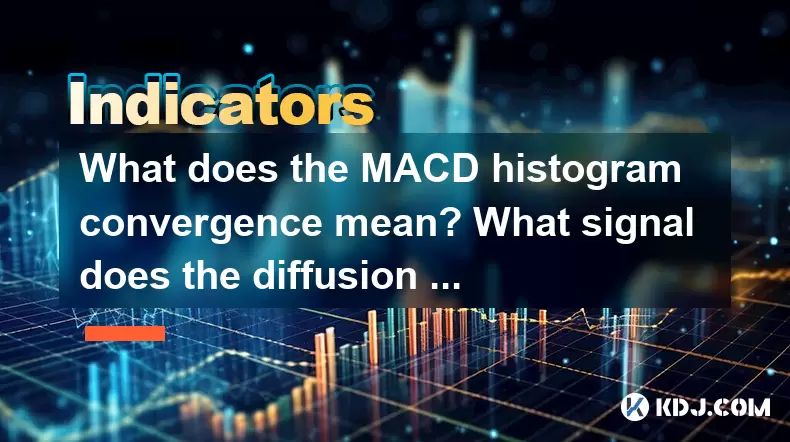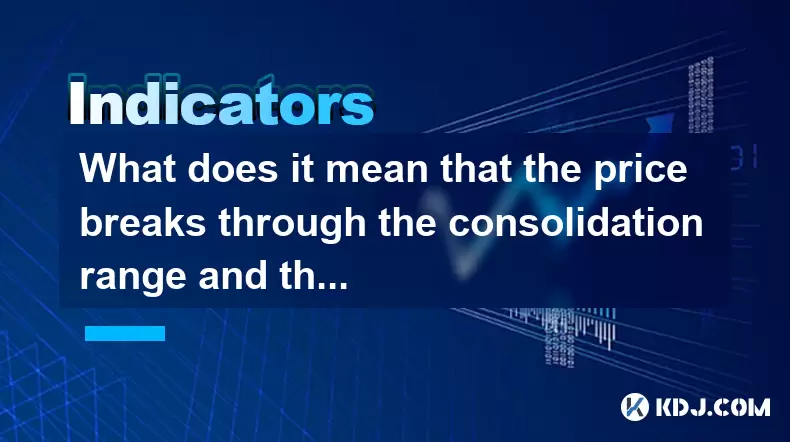-
 Bitcoin
Bitcoin $119800
1.38% -
 Ethereum
Ethereum $3873
3.25% -
 XRP
XRP $3.247
1.85% -
 Tether USDt
Tether USDt $1.001
0.02% -
 BNB
BNB $840.4
5.94% -
 Solana
Solana $190.0
2.55% -
 USDC
USDC $1.000
0.03% -
 Dogecoin
Dogecoin $0.2433
2.69% -
 TRON
TRON $0.3197
-0.05% -
 Cardano
Cardano $0.8367
1.39% -
 Sui
Sui $4.327
3.11% -
 Hyperliquid
Hyperliquid $44.00
0.31% -
 Stellar
Stellar $0.4461
1.76% -
 Chainlink
Chainlink $19.25
4.61% -
 Hedera
Hedera $0.2941
3.90% -
 Bitcoin Cash
Bitcoin Cash $598.4
6.89% -
 Avalanche
Avalanche $26.19
4.67% -
 Litecoin
Litecoin $115.1
0.50% -
 Shiba Inu
Shiba Inu $0.00001427
1.55% -
 Toncoin
Toncoin $3.379
2.01% -
 UNUS SED LEO
UNUS SED LEO $8.966
-0.16% -
 Ethena USDe
Ethena USDe $1.001
0.02% -
 Uniswap
Uniswap $11.04
4.16% -
 Polkadot
Polkadot $4.239
2.00% -
 Monero
Monero $324.6
0.36% -
 Bitget Token
Bitget Token $4.672
2.46% -
 Pepe
Pepe $0.00001294
2.69% -
 Dai
Dai $0.0000
0.01% -
 Cronos
Cronos $0.1443
2.71% -
 Aave
Aave $302.9
1.98%
What does the MACD histogram convergence mean? What signal does the diffusion trend represent?
The MACD histogram helps crypto traders spot potential reversals through convergence and divergence, enhancing decision-making when used with other indicators.
Jun 09, 2025 at 05:00 pm

The Moving Average Convergence Divergence (MACD) histogram is a popular tool used by traders in the cryptocurrency market to identify potential buy and sell signals. Understanding the concepts of convergence and divergence within the MACD histogram can significantly enhance trading decisions. This article delves into what MACD histogram convergence means and what signal the divergence trend represents, providing a comprehensive guide for crypto traders.
What is the MACD Histogram?
The MACD histogram is derived from the MACD line and the signal line. It represents the difference between these two lines and is plotted as a bar graph. When the MACD line is above the signal line, the histogram bars are positive, indicating bullish momentum. Conversely, when the MACD line is below the signal line, the histogram bars are negative, suggesting bearish momentum.
Understanding MACD Histogram Convergence
MACD histogram convergence occurs when the histogram bars begin to shorten in length after a period of divergence. This indicates that the momentum of the current trend is weakening. Convergence can be observed in both bullish and bearish trends and serves as an early warning sign that the trend might be losing steam.
When the histogram bars are getting shorter during an uptrend, it suggests that the bullish momentum is fading. Traders might interpret this as a signal to prepare for a potential reversal or a period of consolidation. Similarly, in a downtrend, shortening histogram bars indicate that the bearish momentum is diminishing, hinting at a possible upcoming reversal or consolidation.
The Signal of MACD Histogram Divergence
MACD histogram divergence refers to a situation where the price of a cryptocurrency moves in the opposite direction of the MACD histogram. There are two types of divergence: bullish divergence and bearish divergence.
Bullish Divergence: This occurs when the price of a cryptocurrency makes a lower low, but the MACD histogram makes a higher low. This discrepancy suggests that the downward momentum is weakening, and a potential upward reversal could be on the horizon. Traders might consider this as a signal to enter long positions.
Bearish Divergence: Conversely, bearish divergence happens when the price makes a higher high, but the MACD histogram forms a lower high. This indicates that the upward momentum is fading, and a potential downward reversal might be imminent. Traders could view this as an opportunity to enter short positions.
How to Identify Convergence and Divergence on the MACD Histogram
Identifying convergence and divergence on the MACD histogram involves a few key steps:
Monitor the Histogram Bars: Regularly observe the length of the histogram bars. Convergence is indicated by bars that are getting shorter, while divergence is signaled by a discrepancy between price action and histogram movement.
Compare Price Action: For divergence, compare the price action with the histogram. Look for instances where the price forms lower lows or higher highs while the histogram does the opposite.
Use Additional Indicators: To confirm signals, consider using other technical indicators like the Relative Strength Index (RSI) or moving averages. These can provide additional context and help validate the signals from the MACD histogram.
Practical Example of Using MACD Histogram Convergence and Divergence
Let's consider a practical example to illustrate how traders might use the MACD histogram convergence and divergence in the cryptocurrency market.
Example of Convergence: Suppose Bitcoin (BTC) has been in a strong uptrend, with the MACD histogram showing increasingly longer positive bars. However, over the last few days, the histogram bars start to shorten, indicating convergence. This might prompt traders to take profits or tighten their stop-loss orders, anticipating a potential reversal or consolidation.
Example of Divergence: Imagine Ethereum (ETH) is in a downtrend, with the price making lower lows. However, the MACD histogram starts to form higher lows, signaling bullish divergence. This could be a cue for traders to consider entering long positions, expecting a potential upward reversal.
Trading Strategies Based on MACD Histogram Signals
Traders can develop various strategies based on the signals provided by the MACD histogram convergence and divergence. Here are a few approaches:
Trend Reversal Strategy: Use convergence as a signal to anticipate a trend reversal. When the histogram bars start to shorten, prepare for a potential change in direction and adjust positions accordingly.
Divergence Trading Strategy: Capitalize on divergence signals by entering positions in the direction indicated by the histogram. For instance, buy during bullish divergence and sell or short during bearish divergence.
Confirmation Strategy: Combine MACD histogram signals with other technical indicators to confirm trading decisions. For example, if the MACD histogram shows bullish divergence and the RSI is also indicating an oversold condition, this could strengthen the case for a long position.
Common Mistakes to Avoid When Using the MACD Histogram
While the MACD histogram is a powerful tool, it is not foolproof. Traders should be aware of common pitfalls to maximize its effectiveness:
Overreliance on Signals: Do not rely solely on the MACD histogram for trading decisions. Always use it in conjunction with other indicators and market analysis.
Ignoring Market Context: The broader market context should be considered. Signals from the MACD histogram might be less reliable in highly volatile or choppy market conditions.
Late Entries and Exits: Be cautious of entering or exiting positions too late based on convergence and divergence signals. Timely action is crucial for successful trading.
Frequently Asked Questions
Q1: Can the MACD histogram be used for all cryptocurrencies?
Yes, the MACD histogram can be used for analyzing the price movements of any cryptocurrency. However, the effectiveness of the signals can vary depending on the liquidity and volatility of the specific cryptocurrency being traded.
Q2: How often should I check the MACD histogram for convergence and divergence?
It is advisable to monitor the MACD histogram regularly, especially during active trading sessions. Depending on your trading style, you might check it daily, hourly, or even every few minutes if you are a day trader.
Q3: Are there any specific time frames that work best with the MACD histogram?
The MACD histogram can be applied to various time frames, from short-term charts like 1-minute or 5-minute to longer-term charts like daily or weekly. The choice of time frame should align with your trading strategy and goals.
Q4: Can the MACD histogram be used in combination with fundamental analysis?
While the MACD histogram is a technical analysis tool, it can indeed be used in conjunction with fundamental analysis. Combining both approaches can provide a more holistic view of the market, helping traders make more informed decisions.
Disclaimer:info@kdj.com
The information provided is not trading advice. kdj.com does not assume any responsibility for any investments made based on the information provided in this article. Cryptocurrencies are highly volatile and it is highly recommended that you invest with caution after thorough research!
If you believe that the content used on this website infringes your copyright, please contact us immediately (info@kdj.com) and we will delete it promptly.
- Bitcoin's Potential Final Rally: Decoding Historical Data and Future Projections
- 2025-07-28 06:30:11
- BlockDAG, XRP, and Utility-Driven Growth: A New Era for Crypto?
- 2025-07-28 06:30:11
- Token Unlocks and Altcoin Mania: A Wild Week Ahead!
- 2025-07-28 04:30:12
- Pi Network: Price Prediction, New Buy Feature, and the Road Ahead
- 2025-07-28 04:50:11
- Hayden Davis's LIBRA Token: From Investment Promise to Memecoin Mayhem
- 2025-07-28 04:30:12
- AI Tokens on CoinMarketCap: The New Millionaire Maker?
- 2025-07-28 04:35:18
Related knowledge

What signal does the ROC send when it rises rapidly from a low level and breaks through the zero axis?
Jul 27,2025 at 10:15am
Understanding the Rate of Change (ROC) IndicatorThe Rate of Change (ROC) is a momentum-based oscillator used in technical analysis to measure the perc...

What signal does the DMA fast line cross the slow line above the zero axis?
Jul 28,2025 at 05:42am
Understanding the DMA Indicator and Its ComponentsThe DMA (Difference of Moving Averages) indicator is a technical analysis tool used in cryptocurrenc...

What does it mean that the rebound is blocked after the moving average is arranged in a short position for the first time?
Jul 26,2025 at 10:51am
Understanding the Short-Term Moving Average ConfigurationWhen traders refer to a 'short position arrangement' in moving averages, they are describing ...

What does it mean that the ZIGZAG low point is raised and the high point breaks through the previous peak?
Jul 28,2025 at 03:28am
Understanding the ZIGZAG Indicator in Cryptocurrency TradingThe ZIGZAG indicator is a technical analysis tool widely used in cryptocurrency trading to...

What does it mean that the parabolic indicator and the price break through the previous high at the same time?
Jul 26,2025 at 07:22pm
Understanding the Parabolic Indicator (SAR)The Parabolic SAR (Stop and Reverse) is a technical analysis tool developed by J. Welles Wilder to identify...

What does it mean that the price breaks through the consolidation range and the moving average diverges upward?
Jul 28,2025 at 03:16am
Understanding the Consolidation Range in Cryptocurrency MarketsIn cryptocurrency trading, a consolidation range refers to a period where the price of ...

What signal does the ROC send when it rises rapidly from a low level and breaks through the zero axis?
Jul 27,2025 at 10:15am
Understanding the Rate of Change (ROC) IndicatorThe Rate of Change (ROC) is a momentum-based oscillator used in technical analysis to measure the perc...

What signal does the DMA fast line cross the slow line above the zero axis?
Jul 28,2025 at 05:42am
Understanding the DMA Indicator and Its ComponentsThe DMA (Difference of Moving Averages) indicator is a technical analysis tool used in cryptocurrenc...

What does it mean that the rebound is blocked after the moving average is arranged in a short position for the first time?
Jul 26,2025 at 10:51am
Understanding the Short-Term Moving Average ConfigurationWhen traders refer to a 'short position arrangement' in moving averages, they are describing ...

What does it mean that the ZIGZAG low point is raised and the high point breaks through the previous peak?
Jul 28,2025 at 03:28am
Understanding the ZIGZAG Indicator in Cryptocurrency TradingThe ZIGZAG indicator is a technical analysis tool widely used in cryptocurrency trading to...

What does it mean that the parabolic indicator and the price break through the previous high at the same time?
Jul 26,2025 at 07:22pm
Understanding the Parabolic Indicator (SAR)The Parabolic SAR (Stop and Reverse) is a technical analysis tool developed by J. Welles Wilder to identify...

What does it mean that the price breaks through the consolidation range and the moving average diverges upward?
Jul 28,2025 at 03:16am
Understanding the Consolidation Range in Cryptocurrency MarketsIn cryptocurrency trading, a consolidation range refers to a period where the price of ...
See all articles

























































































